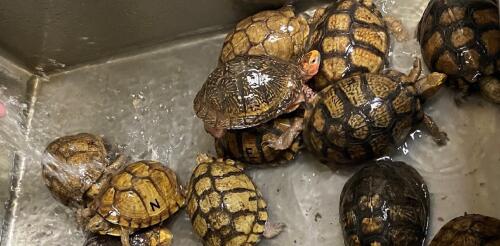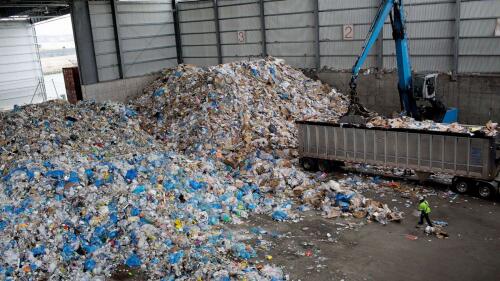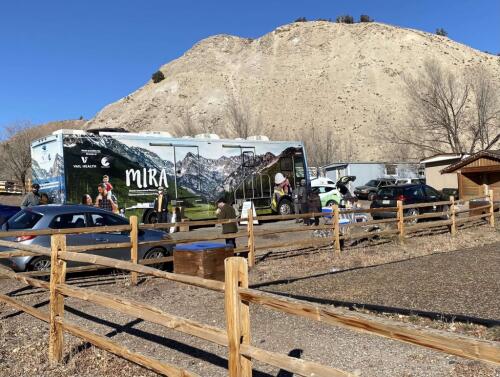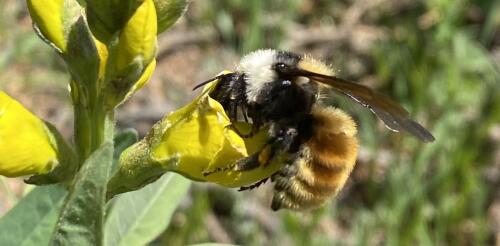Ecology
Strong winds blew across mountain slopes after a record-setting warm, dry summer. Small fires began to blow up into huge conflagrations. Towns in crisis scrambled to escape as fires bore down. This could describe any number of recent events, in places as disparate as Colorado, California, Canada and Hawaii. But this fire disaster happened over 110 years ago in the Northern Rocky Mountains of Idaho and Montana. The “Big Burn” of 1910 still holds the record for the largest fire season in the Northern Rockies. Hundreds of fires burned over 3 million acres – roughly the size of Connecticut – most in just two days. The fires destroyed towns, killed 86 people and galvanized public policies committed to putting out every fire. Many residents of Wallace, Idaho, fled on trains ahead of the 1910 blaze. Volunteers who stayed saved part of the town, but about a third of it burned. R.H. McKay/U.S. Forest Service...
Hatchling turtles are cute, small and inexpensive. Handled improperly, they also can make you sick. Turtles are well-known carriers of salmonella, a common bacterial disease that causes fever, stomach cramps and dehydration and can lead to severe illness, especially in young children and elderly people. In August 2023, the Centers for Disease Control and Prevention released an advisory about an 11-state outbreak of salmonella bacteria linked to pet turtles. “Don’t kiss or snuggle your turtle, and don’t eat or drink around it. This can spread Salmonella germs to your mouth and make you sick,” the agency warned. Global trade in turtles is big business, and the U.S. is a leading source, destination and transit country. Some of this commerce is legal, some is not. For example, it has been illegal in the U.S. since 1975 to sell turtles with shells less than 4 inches (10 centimeters) in diameter because young children often contract salmonella from them. But...
Throwing away an item meant for the garbage may not seem like a big deal. However, when waste integrates with reusable items, it can contaminate the supply. The Ecology Action Center (EAC) of McLean County is warning residents about the long-term damage this can cause. Executive Director Michael Brown explains why this is harmful for the community. “It becomes the dominant material going down the conveyer belt at the sorting facility. So, it takes a lot more time and efforts, and more expensive technology to pull that,” he said. Contamination can directly affect the local trash and recycling services for people living nearby. “It really drives up the cost of recycling services making it less feasible. This is theoretically driving up the costs for residents through their rent, or through their services in family households,” said Brown. He goes by the slogan “when in doubt, throw it out,” when it comes t...
Zoning and environmental stewardship can go hand in hand, but that’s a slow process. Stewardship was a big part of the latest update to the Eagle County Board of Commissioners about rewriting Eagle County land use regulations. Todd Messenger, an attorney with Fairfield and Woods, is working on that rewrite. Messenger and Assistant County Attorney Beth Oliver provided that update, which focused in part on how land use policy can affect stewardship. That work, and draft regulations, have already brought comments, particularly about potential effects on the county’s riparian areas. The draft includes language regarding changes to the county’s current 75-foot setback requirement along streams. A letter from Rick Lofaro and Heather Lewin of the Roaring Fork Conservancy urges keeping the current setback, which “preserves Eagle County’s long-term economic development potential by retaining riparian features beneficial to both private...
Imagine a bee crawling into a bright yellow flower. This simple interaction is something you may have witnessed many times. It is also a crucial sign of the health of our environment – and one I’ve devoted hundreds of hours of field work observing. Interactions between plants and pollinators help plants reproduce, support pollinator species like bees, butterflies and flies, and benefit both agricultural and natural ecosystems. These one-on-one interactions occur within complex networks of plants and pollinators. In my lab at the University of Colorado Boulder, we’re interested in how these networks change over time and how they respond to stressors like climate change. My team emphasizes long-term data collection in hopes of revealing trends that would otherwise be unnoticed. Working at Elk Meadow Ten years ago, I began working in Elk Meadow, which is located at 9,500 feet (or 2,900 meters) elevation at the University of Colorado’s Mountain Resear...




